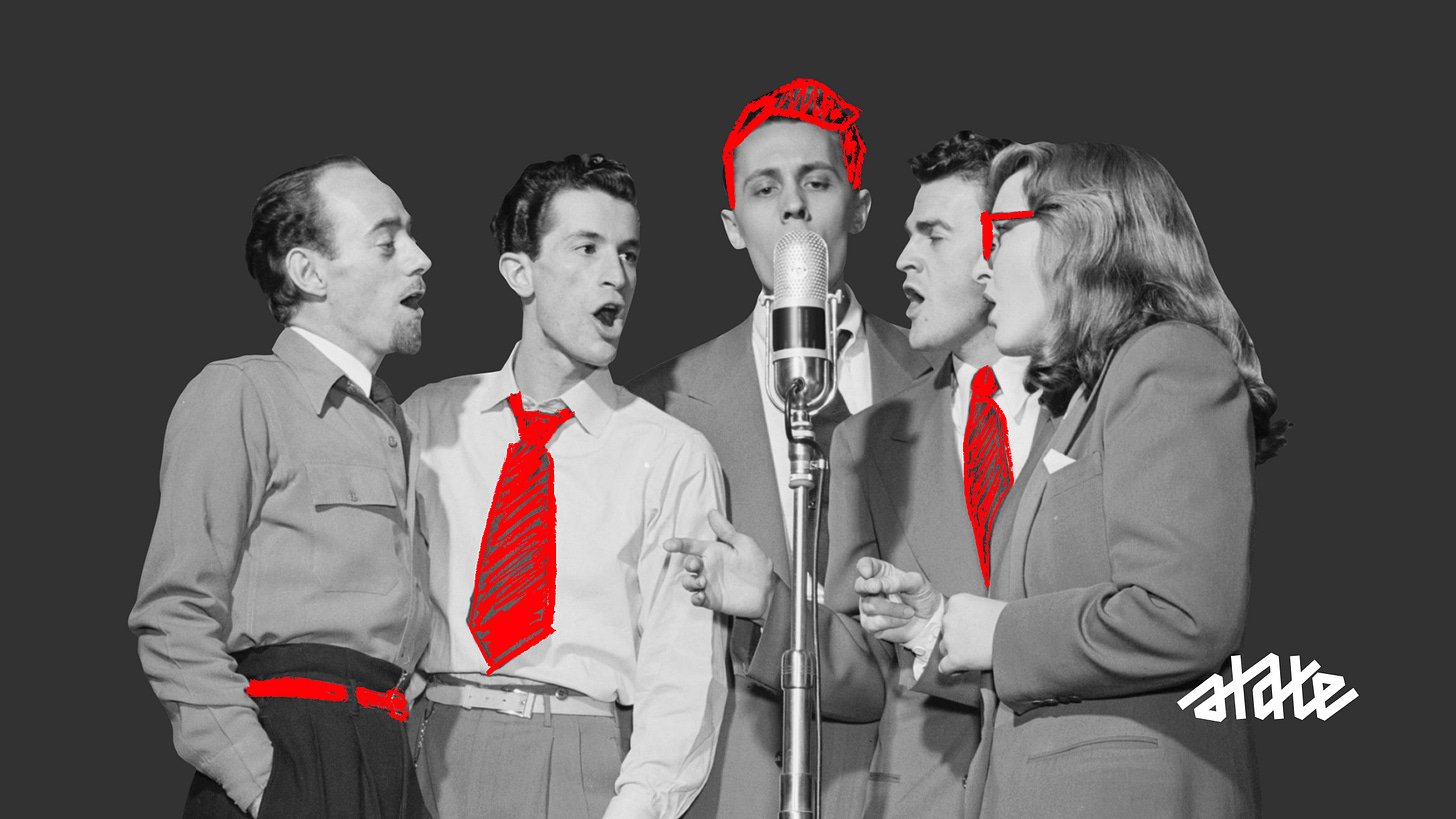When Committee Becomes Catalyst
The Creative Heresy That Works
I believe that design by committee is the only way to do branding. This statement can make my peers in creative recoil.
A room fills with voices—eight executives, two department heads, three product managers. Everyone has opinions about the logo. The marketing director winces as the CFO suggests making it “professional.”
The creative director’s jaw tightens when someone mentions their competitor’s approach. And then someone says “I think it needs to pop!”
But here’s what I've learned after years of fighting this battle: when designers struggle with committee input, it reveals our inability to structure collaboration.
The Myth We Bought Into
The conventional wisdom runs deep: committees kill creativity. Non-experts push personal preferences over strategy. The pursuit of consensus transforms bold ideas into safe mediocrity.
I believed this for years. Made these arguments in countless client meetings. Watched promising concepts die slow deaths in conference rooms.
Then necessity forced a different approach. Large organizations with dozens of stakeholders, most carrying zero marketing experience. Traditional gatekeeping wouldn't work—we needed everyone aboard.
The revelation: Instead of protecting the creative process from the committee, we invited the committee into the creative process.
Why Every Other Approach Fails
Most agencies solve committee chaos through isolation. Creative teams disappear into conference rooms to protect artistic vision, then present finished concepts to stakeholders who never understood the reasoning behind decisions. Beautiful work crashes during implementation.
Internal marketing teams avoid external interference but lack the distance to challenge their assumptions. Safe thinking, rarely transformational.
Strategy consultants interview stakeholders, then craft recommendations in isolation. Smart frameworks with zero psychological ownership from the people who must execute them.
The solution harnesses collective intelligence while maintaining creative coherence—turning stakeholder input into strategic fuel rather than creative friction.
How to Use a Committee for Good
At State of Assembly, we developed the Activators methodology—a structured approach that transforms resistance into creative energy.
Here’s what we discovered: Brand stories don’t live in marketing departments. They scatter across organizations—in casual conversations, offhand observations, insights from the person who answers phones or the engineer who builds the product.
When we gather these voices, patterns emerge that no isolated team could generate.
The Psychology of Collaborative Creation
The “I Helped Build This” Effect
People value what they help create exponentially more than what they receive. When stakeholders participate in brand development rather than hear presentations about finished concepts, they form emotional connections to outcomes. They understand not just what the brand says, but why it says it.
The Creative Boost
Multiple perspectives force deeper thinking. They reveal assumptions, highlight what matters versus what sounds clever in isolation. The committee that kills creativity is the one excluded from understanding. The committee that ignites creativity is the one included in discovery.
How Our Clients Proved This Works
Columbia County Tourism: From “Unbrandable” to Unified
They were often told by stakeholders “You can't brand this county—there’s too many different things.” Our Activators process brought together diverse community voices who resisted unified branding.
The breakthrough came when stakeholders discovered how their perceived weaknesses—no major attractions, pass-through status, diverse communities—could become strengths for spontaneous day-trippers seeking casual exploration. The receptionist mentioned how visitors asked about “quick stops.” The tourism director noticed people loved discovering gems. The highway department provided insights about traffic patterns that revealed opportunity.
“All roads lead to roam” emerged from collective insight, not consultant recommendation. Internal skeptics became passionate advocates because they participated in the discovery rather than received a creative brief.
The Strategic Advantages Others Can’t Replicate
Implementation Without Resistance
Collaboration accelerates rather than delays execution. Internal teams don't need training to embody brand strategy because they helped create it. Customer service representatives know why certain language matters. Salespeople articulate unique value without referring to notes.
Authenticity Through Understanding
When internal stakeholders understand creative reasoning, brand expression feels natural rather than forced. This authenticity translates into customer experiences that feel coherent across every touchpoint.
Competitive Differentiation Through Internal Intelligence
The insights that emerge from structured internal collaboration reveal competitive advantages that external research misses. Organizations discover their hidden strengths rather than copy industry best practices.
Your Next Move
Stop treating stakeholder input as creative interference. Start treating it as competitive intelligence.
Your best ideas dying in committee? Our Activators methodology transforms your biggest implementation challenge into your strongest creative advantage.
Schedule a collaborative branding consultation where we’ll demonstrate how structured internal engagement enhances rather than compromises creative quality.
The committee isn’t your enemy. It’s your catalyst.


